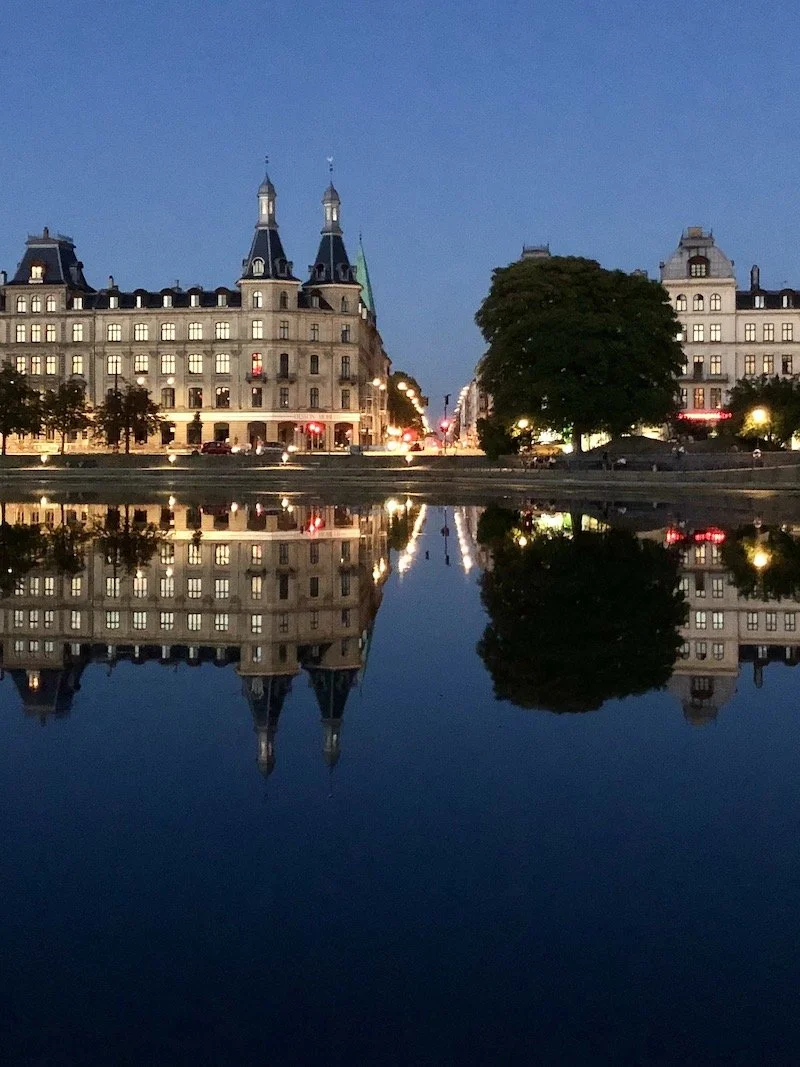Midsummer around the Copenhagen Lakes
A summer view over the Copenhagen Lakes
“The heat of autumn is different from the heat of summer…”— Jane Hirschfield
The midsummer festival for the summer solstice in late June is taken seriously and celebrated joyously throughout Denmark and also at the Copenhagen Lakes. On Saint John’s Eve, bonfires are lit on rafts in the lakes at dusk mirroring the old pagan rituals to mark the turning of the sun and the hope of keeping at bay the darker days ahead. Though the celebration was adapted to Christian traditions, it remained full of superstition and symbolism for hundreds of years. Modern families and friends gather, sitting lakeside on blankets enjoying beverages, to watch the witch effigies burn, that sit atop the bonfires and symbolize the banishing of all things evil.
While the warmer months last, wildlife takes an active role in the lake environment. Many birds make their home here including numerous varieties of ducks, seagulls, and geese. Two small islands created as bird sanctuaries have been adopted, one by egrets, the other by cormorants. Swans are the national bird of Denmark thanks to Hans Christian Andersen’s “Ugly Duckling”, and a large mute swan population resides here too. When the cygnets appear for their first swim in June, passers-by to stop to watch, and the children’s excitement cannot be overlooked. There are also fish in the lakes, the largest being pike. Though fishing is not normally allowed, the city puts on an annual summer event for a weekend each June, bringing out anglers of all ages who test their skill.
The two oldest lakes, Peblinge and Sortedam, were part of the medieval city defenses, then contributed to its water supply from the early 1700s, when they were deepened, purified, and bordered with large stones. One hundred fifty years later they were abandoned as the main water source for the growing city due to poor water quality. In the 1960s, the eastern portion of the lakes was nearly sacrificed to a 4-lane road project, which was thankfully abandoned, and the lakes instead received protected status.
Once autumn comes around and the days get shorter, all activity quiets down. Some of the birds migrate away, others find refuge at the grassy edges of the third lake, Saint Jørgens. Commuters still bike to and from work on the bicycle paths around the lakes, but the benches are much less frequently occupied as the weather becomes rainier. Climate change has meant more frequent heavy downpours which threaten a city that is essentially situated at sea level, so Saint Jørgens will be used as a catch basin to prevent flooding in Copenhagen.
Now, these three lakes, which look like five from above due to the bridges that cross them, provide a much-loved recreational area for residents who walk or jog on the paths, frequent the cafés and rent the swan boats to paddle around on a sunny day. Some travelers, who spend more than a couple of days in Copenhagen, have the chance to experience this prized area away from the city center, with the expansive views that can even include a vivid sunset.
Don’t miss:
Renting a swan boat to paddle on the lake for an hour.
Lunch Tip:
Café La Pausa on Peblinge Lake for superb café food and cocktails.
Subscribe for inspiration to have my posts drop directly into your inbox. *If you enjoyed what you read, please share this post with like-minded travelers.*
*All photographs are mine, taken with my Nikon D3100 or iPhone 8.*










